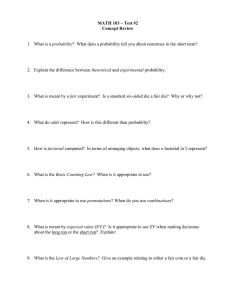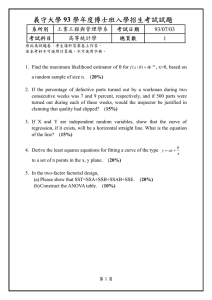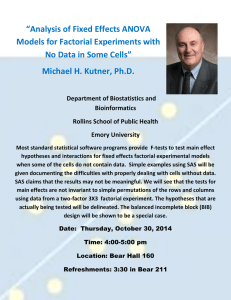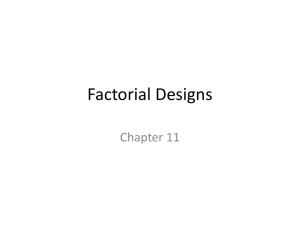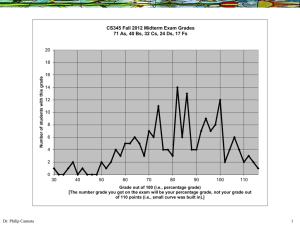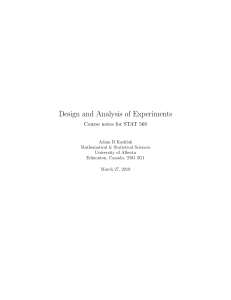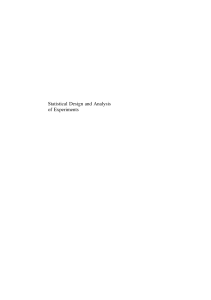Vocabulary.doc
advertisement
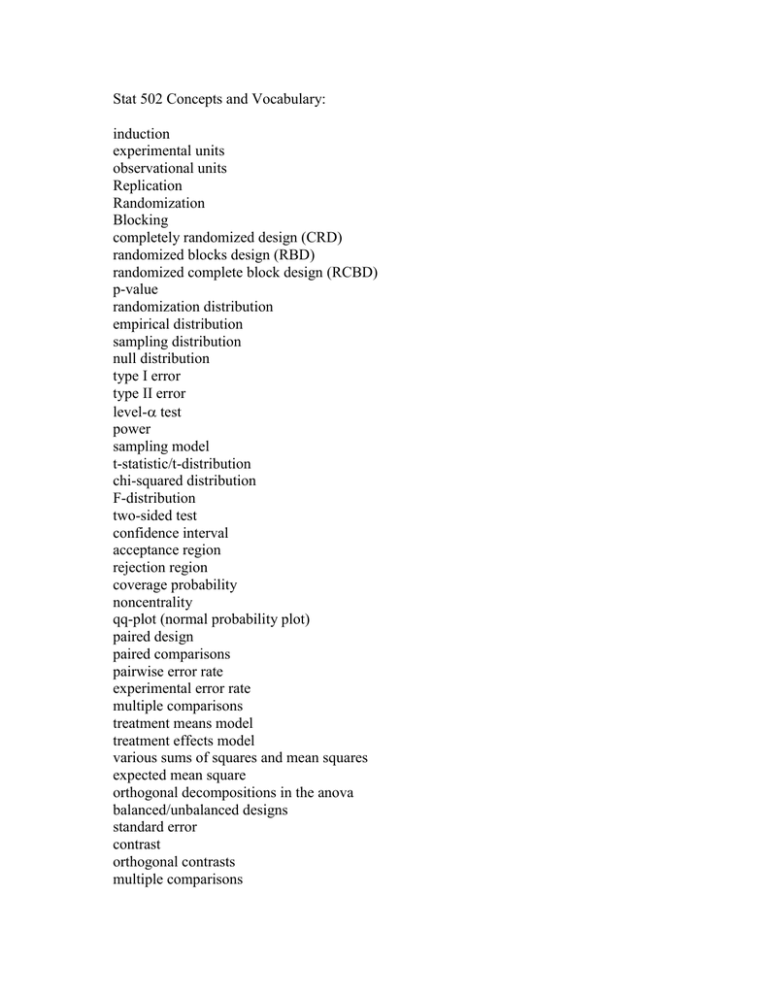
Stat 502 Concepts and Vocabulary: induction experimental units observational units Replication Randomization Blocking completely randomized design (CRD) randomized blocks design (RBD) randomized complete block design (RCBD) p-value randomization distribution empirical distribution sampling distribution null distribution type I error type II error level- test power sampling model t-statistic/t-distribution chi-squared distribution F-distribution two-sided test confidence interval acceptance region rejection region coverage probability noncentrality qq-plot (normal probability plot) paired design paired comparisons pairwise error rate experimental error rate multiple comparisons treatment means model treatment effects model various sums of squares and mean squares expected mean square orthogonal decompositions in the anova balanced/unbalanced designs standard error contrast orthogonal contrasts multiple comparisons Bonferroni Fisher’s LSD Scheffe Tukey residuals heteroscedasticity mean-variance relationship Levene’s test Bartlett’s test variance stabilizing transformations power transformations interpretation of models on transformed scales, especially for log transform Box-Cox transformation factorial design additive and multiplicative models interaction effects balanced vs unbalanced designs Review Questions: Answer each with a few sentences (a) What are the benefits of randomization? (b) What is a test statistic? (c) What is a null distribution? (d) What are two ways of deriving a null distribution? (e) What is a p-value? What does it measure? (f) What is a hypothesis test? (g) What is a confidence interval? What is it useful for? (h) What is an ANOVA table describing? (i) Discuss the connection between the t-statistic and the t-distribution. (j) For comparing two groups, what is the difference between a paired sample design and a CRD? What are the standard test procedures you perform in each case? (k) Describe how the following are used together to make a statistical decision: Null and alternative hypotheses, a test statistic, a null distribution, and a p-value. (You may need more than a few sentences for this one, maybe make a flowchart). Midterm exam, Nov 6: - - - understand all the above concepts and vocabulary you will be presented with computer output and be asked to interpret it. Simple calculations may be required; you may bring a hand calculator, but it is not necessary as approximate hand computations of products and ratios will suffice. you might be asked to demonstrate that you understand a certain result or calculation (probability of a type I error in a particular circumstance, noncentrality for a simple test, orthogonality, randomization procedure for a particular design). This is a “closed-book” exam; no notes. “Part II” marginal means vs least squares means for unbalanced anova interaction plot sequential sums of squares and F-tests Analysis of covariance test of equal slopes design issues: blocking vs analysis of covariance factor effects in 2k factorial designs QQ (Daniel) plots for factorial designs blocked and fractional factorial designs aliasing/confounding of higher order interactions generators and defining relation for blocked factorial design nested design split-plot design repeated measures design random effects model or mixed effects model variance component


